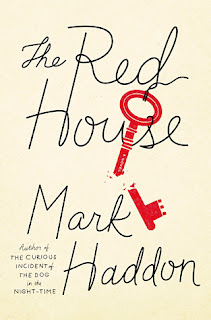A Blaze of Glory: A
Novel of the Battle of Shiloh begins the new Jeff Shaara trilogy focusing
on events of the Civil War’s Western Theater.
As fans of Shaara’s The Last Full
Measure and his father’s The Killer
Angels will attest, his return to the Civil War era is a welcome one. I was particularly pleased to see that the
new series begins with the Battle of Shiloh because of the number of hours I
have spent walking that particular battlefield site over the years. A Blaze of Glory leaves me with a better
understanding of what happened during those two critical days in 1862 and, just
as importantly, what might have
happened if either army had been better prepared for the fight. (My interest probably stems from the fact
that my great-great grandfather was a member of the 18th Louisiana
Infantry Brigade that suffered a forty percent casualty rate on the battle’s
first day – him not among them.)
Shaara, as in his past historical novels, uses a range of
characters (some real, some fictional) to tell his story. This allows the author to offer insights into
the personalities, motivations, jealousies, fears, doubts, and dreams that were
carried to the field by all those soldiers on April 6-7, 1862. All told, more than 100,000 men fought on
this relatively small patch of ground and almost 24,000 of them are counted as
casualties of Shiloh (although less than 4,000 actual deaths are included in
the total). The battle’s rotating
points-of-view include those of Generals Grant, Sherman, Johnston, and
Beauregard, along with those of a few lower-ranking officers and enlisted men.
 |
| Jeff Shaara |
Caught by surprise at dawn on the first day of the battle,
Union troops, as dusk approaches, have been driven as far as they can go
without drowning themselves in the rain-swollen Tennessee River. Unfortunately for the Confederacy, General
Albert Sidney Johnston is dead (having bled to death from a leg wound he barely
seemed to notice at the time) and has been replaced by his second-in-command,
the more cautious General P.T.G. Beauregard.
The battle will turn on Beauregard’s decision to rest and reorganize his
men for what he sees as a certain Union surrender requiring only a last surge
on his part the next morning. But the
next morning, the reinforced Union army attacks first and the Confederates are
the ones forced to concede the field to a victorious army.
One must remember, of course, that A Blaze of Glory is historical fiction and that Shaara uses the
genre to speculate his way inside the heads of some of American history’s key
players. His books, however, are not
some alternate history version of America’s past. Shaara does not change
historical facts. Rather, he uses his
research and insight into the human condition to explain why things happened as they did.
Naturally, his speculation and interpretation of events can be disputed,
but without a doubt, he has humanized the Civil War in a way that even the best
history books are unable to match.
Shaara’s painless history lessons are so exciting that many of his
readers will, I am certain, be compelled to pick up “real” history books for
the first times in their lives.
(Review Copy provided by Publisher)





























